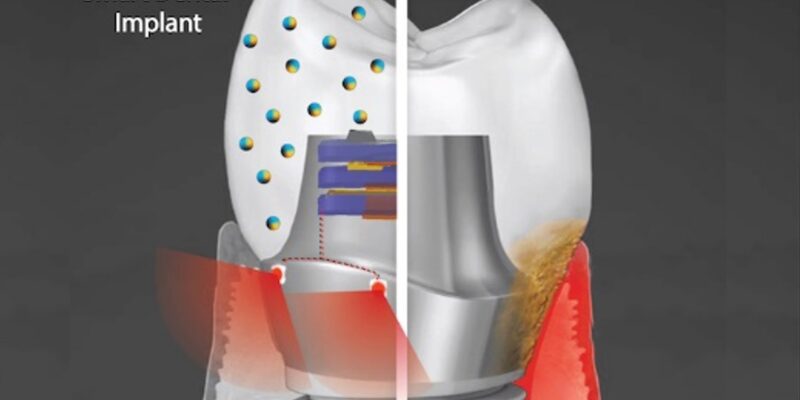Researchers are developing a smart dental implant that resists bacterial growth and generates its own electricity through chewing and brushing to power a tissue-rejuvenating light.The innovation could extend the usable life of an implant.
At present dental implants represent the most suitable way to replace a tooth lost to decay, gum disease, or injury. They provide greater resemblance to the natural tooth and are expected to last for years to come. But most of the implants fall short of the expectation and are damaged in five to 10 years due to local inflammation or gum disease, necessitating a repeat of a costly and invasive procedure for patients.
The novel implant would implement two key technologies,as said by Geelsu Hwang, an assistant professor in the University of Pennsylvania School of Dental Medicine:
- Nano particle-infused material that resists bacterial colonization.
- An embedded light source to conduct photo-therapy, powered by the natural motions of the mouth, such as chewing or tooth-brushing.
"Photo therapy can address a diverse set of health issues," says Hwang. "But once a bio-material is implanted, it's not practical to replace or recharge a battery. We are using a piezoelectric material, which can generate electrical power from natural oral motions to supply a light that can conduct photo-therapy, and we find that it can successfully protect gingival tissue from bacterial challenge."
How do these ‘smart’ implants work?
The team first used discs embedded with nano-particles of barium titanate (BTO) and exposed them to Streptococcus mutans, a primary component of the bacterial biofilm responsible for tooth decay commonly known as dental plaque. They found that the discs resisted biofilm formation in a dose-dependent manner. Discs with higher concentrations of BTO were better at preventing biofilms from binding.
The material generates enhanced negative surface charge that repels the negatively charged cell walls of bacteria. It's likely that this repulsion effect would be long-lasting, the researchers say.
We wanted an implant material that could resist bacterial growth for a long time because bacterial challenges are not a one-time threat," Hwang says.The power-generating property of the material was sustained and in tests over time the material did not leach. It also demonstrated a level of mechanical strength comparable to other materials used in dental applications.
Also, the material did not harm normal gingival tissue in the researchers' experiments, supporting the idea that this could be used without ill effect in the mouth.
In future work, the team hopes to continue to refine the "smart" dental implant system, testing new material types and perhaps even using assymetric properties on each side of the implant components, one that encourages tissue integration on the side facing the gums and one that resists bacterial formation on the side facing the rest of the mouth.
Source: University of Pennsylvania




















Comments